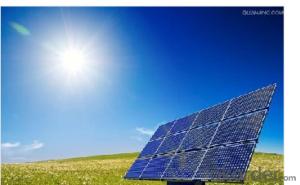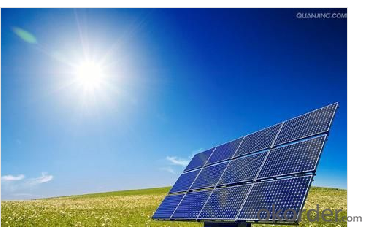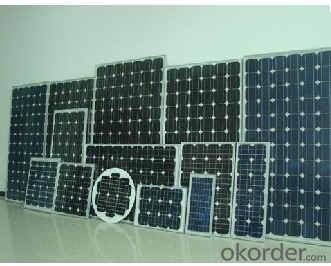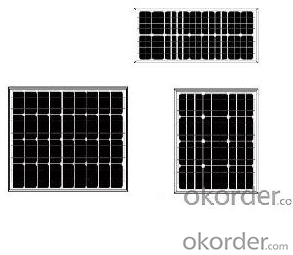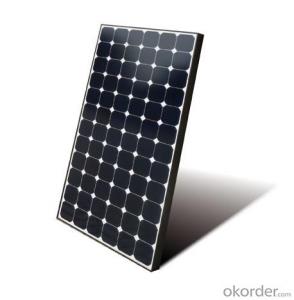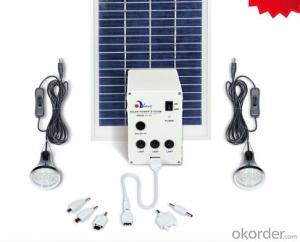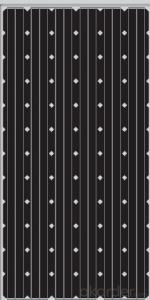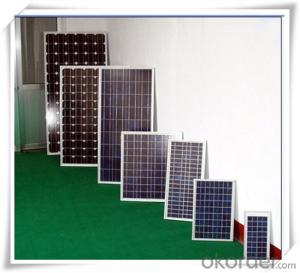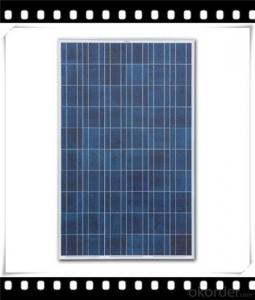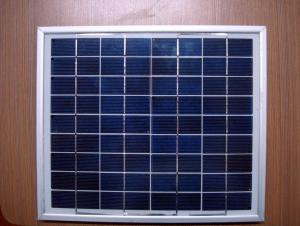Solar Panels Tesla Roof A Grade 300W CNBM
- Loading Port:
- China main port
- Payment Terms:
- TT or LC
- Min Order Qty:
- 1 pc
- Supply Capability:
- 20000000 pc/month
OKorder Service Pledge
OKorder Financial Service
You Might Also Like
Description:
CNBM Solar is a world-leading and Vertical integrated manufacturer of high-performance with Silicon,
Wafer, Cells, Modules, which convert sunlight into electricity for residential, commercial, and utility-scale
power generation.
The capacity of CNBMSolar is reach to 1GW, and make sure each year our shipment capacity is more
Than 700-800MWs, at the same time, we have set up the largest solar power station with our partner
in Ukraine.
CNBM is a Quality + Service oriented company with“Excellence at Each Step” approach, composed of
the finest components from TUV and IEC-certified partners around the world, CNBM modules consistently
undergo a variety of trials at the company’s Test & Development Centre, ensuring peak performance
capabilities. The company is committed to develop and provide the world with clean and renewable energy
to ease the energy shortages as well as human kind’s impact on the environment.
Quick Details
Packaging & Delivery
| Packaging Detail: | standard export package for solar panel |
| Delivery Detail: | 7-15 days for solar panel |
Specifications
solar panel
High Efficiency
25 years Warranty
High-transmissivity low-iron tempered glass
Solar Panel
50w100w150w200w250w300w
Characteristics
1,High and stable conversion efficienly based on over 4 years professional experience
2 ,High reliability with guaranteed +/-10% output power tolerance
3,Proven materials,tempered front glass,and a sturdy anodized aluminum frame allow modules to operate reliably in multiple mountily configurations
4,Combination of high efficicncy and attractive appearance
Quality and Safety
1,25 year 80%,10 year 90% power warranty 3 year power warranty
2,ISO9001:2000 (Quality Management system) certified factory
3,Product Quality warranty & products Liability Insurance to guarantee and user' benefits
4,Certifications TUV Intercert, CE Temperature Coefficients
IMAGES: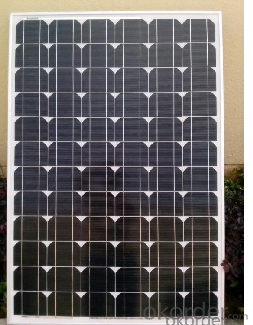
FAQ:
WHAT'S THE ADVANTAGES OF CNBM?
1.CNBM is a state-owned company under jurisdiction of central goverment , one of Fortune 500 .Just because of this ,we can get more support and resources from our government.So ,it is realiable .
2.CNBM's solar products are high-qualified with TUV,UL,VDE,CE,ISO certificates. Our products ranges top in China.
3.Just as I mentioned in attahment ,we signed 500MW project with Urkan under the witness of our chairman Xi Jinping ,CNBM has ability to meet your large quantity needs,Our annual capacity is 1GW.
4.We can offer you a competitive price .Because you are our potential and valued customer .
- Q: I think that solar panels are the future and i think that the conventional way of generating electricity is going to be replaced by solar panels. I would like to be part of this industry as an entrepreneur but i do not know how to since i do not have a technical background. I would like to sell solar panels to consumers and to business. Should I start a manufacturing company that manufactures solar panels? Should I buy solar panels from manufactures and sell them to consumers? What should I do?
- HEAR IS A WAY, BY CLICKING THE LINKS $$GET PAID $$GET PAID $200+EURO 200 INSTANT $$ $$SINGUP BONUS $$ GET PAID BY CLICKING BELOW FOLLOW THE INSTRUCTIONSFIRST CLICK THE LINK ONE AND REGISTER YOUR SELF, AND THEN CLICK THE LINK TWO AND REGISTER YOUR SELF CLICK AND GET THE LINKS:
- Q: How does the snow cover get removed from the panels?
- Just okorder /... As an aside the efficiency of the panels will also be maintained if the panels are cleaned of dust and debris. The maintenance of removing snow and dust is one argument for having the panels on a rack on the ground. Solar Thermal panels are intended to capture the sun's heat. Two types that make hot water are flat panels and vacuum tube collectors. The vacuum tube collectors work better in colder and cloudy areas but their efficiency prevents heat loss that might melt snow. Most of a light snow will fall between them but you are back to maintenance with a heavier snow. Flat panels are less efficient and will melt a light snow off of the panels for a heavier snow you will need the roof rake. The last type of solar panel are solar air panels. These are most often mounted on the side of a house rather than the roof as they are intended to provide hot air to the living spaces. They are essentially like little greenhouses. Unless the snow is building up against the side of the house these should be free from a snow problem.
- Q: How do solar panels affect the overall energy consumption of a building?
- Solar panels can significantly reduce the overall energy consumption of a building. By harnessing renewable energy from the sun, solar panels generate electricity, which can be used to power various appliances and systems within the building. This reduces reliance on traditional energy sources, such as fossil fuels, thereby lowering the building's energy consumption from the grid. Additionally, excess energy produced by solar panels can be stored in batteries or fed back into the grid, further offsetting the building's energy consumption. Overall, solar panels contribute to a more sustainable and energy-efficient building by reducing its overall energy needs.
- Q: If you were to be asked to write a material(s) report on either -solar panelsor -aircraft fuselageWhich would you choose?well i was asked to choose between these two,so i guess that if i choose what the majority wouldn't, i might just score a little bit higher,what do you think?if you are the lecturer you would want something different right?
- If you pick the fuselage, look up friction stir welding. It's a low temp, solid state method of joining Al. I have taken a few classes (undergrad and grad) from Dr. Reynolds. This stuff is cool!
- Q: I am designing a solar panel but i need to have maximum power output.How can i optimize the equation for power Total power=voltage * current to get maximum power.
- first place the panel so it is at right angles to the solar rays. Make sure none of the panel has any shade whatsoever. For best results use motor drives to keep it in that position as the sun moves across the sky. For overall maximum versus time, you need to be near the equator. Solar cells have a high internal resistance, so for maximum power transfer, you need a load of that same resistance. A good charge controller will use DC-DC converters to provide that load. .
- Q: Dear Friends, I am very much worried about Global warming, So to contribute something for reducing Global Warming I have decided to use Solar Panels. Can anybody tell me what is the price of these Solar Panels and why people are not using them when they are environment friendly. What are the Pros and Cons of these Solar Panels?
- In the US and western Europe, the average cost to install a solar system.....panels, wire, battery bank inverters and all of that is $5 ( five) US a watt. ( One panel, 2 x 3 feet putting out 75 Watts costs $700-800 US ) Mos American homes use about 000 kilo Watt hours of electricity a month.. oking, heating, cooling, refrigeration, water lights and all that. that is 2,000 kilowatts a year. A solar panel system would therefore cost $60,000 US to install. That is WAY beyond almost everyone's means, which is why the US and Europe is not covered in solar panels. There is also the amount of sunlight per day and the height of the sun in the sky. There is a formula to figure out how much usable sunlight a day you get; the further north the less......and that number averages out to about 5 hours a day year round. So back to the 000 kW a month.......30 + kWh a day.......in 5 hours a day you have to generate 6,000 watts .... divide by 75 watts a panel = 35 panels x 75.00 per = 25,000 $ US plus wiring, batteries and all that........
- Q: Can solar panels be installed on any type of roof?
- Solar panels can be installed on most types of roofs, including flat, sloped, and metal roofs. However, the suitability of a roof for solar panel installation depends on factors such as its orientation, shading, structural integrity, and load-bearing capacity. It is recommended to consult with a solar professional to assess the specific requirements and feasibility for installing solar panels on a particular roof type.
- Q: Can solar panels be used to power swimming pools?
- Yes, solar panels can indeed be used to power swimming pools. Solar panels can generate electricity from sunlight, which can be used to operate pool pumps, heaters, and other equipment, reducing the reliance on traditional electricity sources and saving on energy costs.
- Q: when building a solar panel should the diode be on the positive or negative sidelittle more detail i just built a solar panel and im running it to a grid tie converter should i put diodes in if i add another panel or are they only for battery systems?
- I'm assuming you're talking about the blocking diode and not the bypass diodes. Positive side.
Send your message to us
Solar Panels Tesla Roof A Grade 300W CNBM
- Loading Port:
- China main port
- Payment Terms:
- TT or LC
- Min Order Qty:
- 1 pc
- Supply Capability:
- 20000000 pc/month
OKorder Service Pledge
OKorder Financial Service
Similar products
Hot products
Hot Searches
Related keywords
